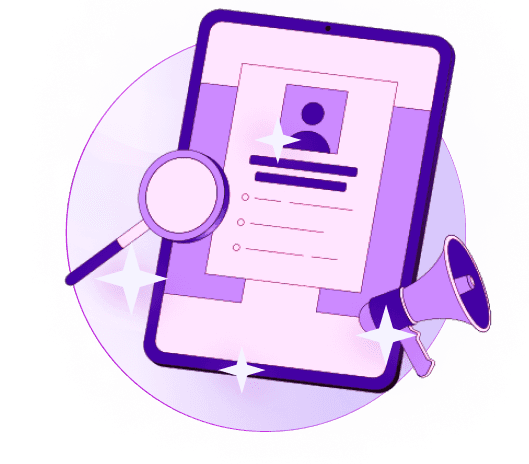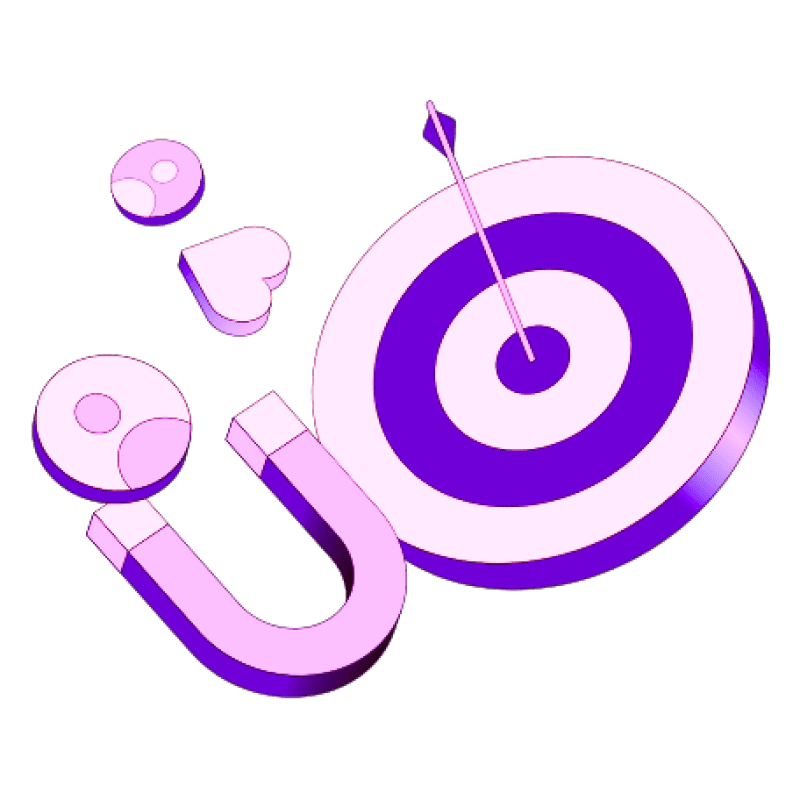Blogs
Articles

5 Automated Follow-Up Sequences to Boost Your Sales Outreach
Did you know that 70% of responses come from the 2nd to 4th email in automated follow-up sequences?
Sales professionals often rely on single-touch outreach and miss countless opportunities to connect with potential customers. The data tells an interesting story - it takes three emails on average to generate one lead, starting from the first cold email until receiving a positive reply.
Let's explore five proven follow-up sequences that will change your sales outreach efforts. These automated follow-up systems will help you boost conversions and build stronger customer relationships, whether you struggle with cold outreach or want to improve your post-purchase communication.
What Are Automated Follow-Up Sequences?
Automated follow-up sequences are changing how sales teams communicate. These pre-programmed message series go out to prospects at specific times after their first interaction. They create a story that keeps your brand memorable while guiding prospects through your sales funnel. Your sales team doesn't need to send one-off messages anymore. The technology delivers timely, relevant content automatically.
The idea is simple but powerful. You create messages, decide when they should go out, and let your system do the work. Your prospects get consistent updates throughout their buying trip. Each message tackles different concerns and objections.
How they work in sales outreach
These sequences run on triggers that start specific actions based on what prospects do or when you schedule them. A well-planned sequence creates a smooth experience that feels personal, even though it runs on its own.
Here's what a typical workflow looks like:
You send an initial email about a product to your mailing list
A subscriber clicks the link to view the product but doesn't make a purchase
Three days later, your system sends that subscriber an automated follow-up email
A week later, another automated follow-up goes out with an exclusive discount
Benefits of using automation over manual follow-ups
Automated follow-up sequences beat manual approaches in many ways. Email marketing brings in USD 36.00 for every USD 1.00 spent—that's 3600% ROI. Automated workflows do even better, making 320% more money than regular email campaigns. A real success story shows this clearly: a follow-up sequence built with HubSpot's free Email Templates tool made USD 100,000 in just 30 days and boosted revenue by 215%.
Money isn't the only benefit. These sequences offer many operational advantages:
Time savings and increased efficiency The system handles routine tasks like sending reminders, follow-ups, and scheduling check-ins. This frees up your sales team to do more important work. Sales reps can focus on strategy instead of managing each lead manually. One sales person using automation software can do the work of fifty people working by hand.
Consistent communication Sales reps often handle many leads at once. Without automation, some prospects might get forgotten. Automated sequences remember every lead and keep in touch without overwhelming them. Studies show 80% of sales need five follow-up calls after the first meeting, but 44% of salespeople quit after one follow-up. Automation fills this gap by keeping the conversation going.
Better lead nurturing Not everyone buys right away. These sequences keep leads interested until they're ready to decide. You can send targeted messages based on what leads like or how they've interacted before. Quick follow-ups show prospects you care and are well-organized, setting you apart from competitors who don't follow up or do it randomly.
Personalization at scale Modern automation tools can customize messages based on how leads behave, what they like, and who they are. This creates a personal touch even when talking to thousands of prospects. Emails can use names, mention specific interests, or show relevant products. You can also group leads by industry, company size, or behavior, then send each group messages that fit their needs.
Data-driven optimization These systems show you how prospects engage, helping you improve what works. You can track open rates, clicks, responses, and sales. This lets you test different subject lines, email content, or calls-to-action to find what works best.
5 Automated Follow-Up Sequences to Use
The right follow-up sequence can boost your sales conversion rates. Each sequence type serves a specific purpose throughout your customer's experience, from the first contact to post-purchase participation.
Let's look at five automated follow-up sequences that can transform your sales outreach.
1. Cold outreach sequence
Cold outreach sequences connect you with potential customers who haven't dealt with your business before. These sequences need careful planning and the right timing to work best.
A well-laid-out cold outreach sequence has:
An original email that introduces you and your value proposition
2-4 follow-up emails a few days apart
Multiple touchpoints (email, phone, social media) that boost participation
Research shows sequences with 4-7 follow-ups achieve a 33% reply rate, compared to 25% for sequences with just 1-3 follow-ups. This shows why persistence matters in cold outreach.
The right timing between messages makes cold outreach successful. Sales experts suggest a rhythm that moves from low frequency to high frequency and back again for cold outbound sequences. Larger accounts with multiple stakeholders need longer sequences, while prospects with shorter sales cycles respond better to brief sequences.
Successful salespeople send between 4-12 cold emails to prospects over 1-2 months. Their persistence pays off—studies show it takes three emails on average to make one lead, from the first cold email to getting a positive reply.
2. Onboarding sequence
A good onboarding sequence helps new customers get the most value from your product while building lasting relationships.
The sequence starts with a welcome email right after signup. This email should guide customers back to your product so they see its value quickly. The rest of the sequence should have:
Educational content about key features
Step-by-step guides for common tasks
Tips to maximize product value
Ways to join the community
3. Re-engagement sequence
Re-engagement sequences help you reconnect with subscribers or customers who haven't interacted with your brand lately. These sequences boost subscriber participation and wake up dormant customers.
The time to mark subscribers as disengaged depends on your email frequency. Brands that send bi-weekly emails might wait 3 months, while monthly emails might extend to 6 months or a year.
A good re-engagement sequence usually has:
A "We Miss You" email that acknowledges their absence
A special offer to bring them back
Social proof showing what others love
A final reminder with an easy way out
4. Conversion sequence
Conversion sequences move prospects toward buying. Unlike nurturing emails, these sequences take a direct approach to turn interest into commitment.
A strong conversion sequence typically has:
First outreach about a specific pain point
Educational content or case study (2-3 days later)
Social proof or testimonial (5-7 days later)
Final call-to-action (10-14 days later)
These sequences work best when they match the reader's persona, address specific problems, show your solution clearly, and include one clear call-to-action. Customer testimonials and results build trust and help overcome doubts.
5. Post-purchase follow-up sequence
Post-purchase sequences maintain customer relationships after a sale and encourage loyalty. These sequences mix both transaction details and sales messages.
A complete post-purchase sequence has:
Order confirmation email (sent right away)
Shipping notification email
Delivery confirmation email
Product education email (1-2 days after delivery)
Review request (3-4 days after delivery)
Cross-sell/upsell suggestions
Replenishment reminders (for items that run out)
Post-purchase emails bring in 90% more revenue per recipient than regular email campaigns because ongoing engagement boosts customer loyalty and repeat purchases. McKinsey reports cross-selling through these emails can boost sales by 20% and profit by 30% as customers add more items.
How to Create Automated Follow-Up Sequences?
A methodical plan beats random email assembly when creating automated follow-up sequences that work. Your sequences will deliver the right message at the right time and end up driving better results for your business with a well-laid-out approach.
Here's a step-by-step process to build powerful automated follow-up sequences that convert.
Start fresh with a new point of view. Your existing follow-up sequences should be set aside completely. Rather than making small improvements, create something entirely new. This reset lets you bring innovative ideas with a clean slate.
Your sequences need clear objectives. The goal of each email must be defined before sending—whether it's getting a reply, booking a call, or making a direct sale. Your emails might seem random and get ignored without specific goals. Clear goals make your messages focused and success measurement straightforward.
Your goals should guide the development of two separate follow-up sequences—one for leads and one for customers. Communication should move from trust-building and value explanation to customer service once leads become customers. This includes encouraging repeat purchases and asking for referrals.
Each goal needs "by..." statements that explain how you'll achieve them. Think of multiple ways to reach each goal. The best ideas might come after extensive brainstorming—number 17 or 31 could be your breakthrough.
Sequence mapping comes next. The first few drafts work well with pen and paper. The overall process and simple order of events matter more than details. An automation builder tool can help create a visual flowchart of your sequence.
Proper audience segmentation creates relevant communication. Generic approaches don't get good responses. Separate leads from customers, trial users from paying subscribers, and webinar attendees from e-book downloaders. More relevant follow-ups come from better audience segmentation.
Tools to Automate Your Follow-Up System
Picking the right tools plays a significant role in creating effective automated follow-up sequences. Research shows that businesses using automation software generate twice as many leads as those without it.
Let's look at the tools that can help you build and manage successful follow-up systems.
Using CRM-integrated email tools
CRM-integrated email tools combine customer relationship management capabilities with automated email communication to create a powerhouse for sales teams. Your customer data and email campaigns work naturally together, which eliminates data silos and manual transfers.
These integrated systems give you optimized workflows. CRM workflows work like an extra team member that handles routine tasks and keeps customer interactions on track. Your human team can focus on building relationships that need a personal touch.
These integrated tools also provide valuable insights through analytics. Good analytics help you understand:
Your email communications' performance
Your customers' best responses
Areas where you can improve
Top platforms for automated email sequences
Some platforms excel at automating email sequences:
HubSpot Sales Hub has complete functionality that includes automated follow-ups based on user actions or pre-set schedules. It tracks engagement metrics well and uses CRM data to customize email content dynamically. Companies already using HubSpot or planning to scale into full CRM features will find this platform merges naturally with their needs.
ActiveCampaign brings together email marketing with robust CRM functions. It has advanced segmentation and delivers personalized content to nurture leads effectively. The platform stands out for its powerful automations in list management, with triggered campaigns, segmentation, tagging, and data updates.
Mixmax helps sales teams scale personalized, customer-centric communication. Sales teams can start more conversations with prospects of all sizes using easy-to-build email templates and multi-channel sequences. Mixmax customers report going live in less than one day and see positive ROI in under six months.
Reply.io excels with its multi-channel capabilities by combining email, LinkedIn, SMS, and calls in one workflow. The platform makes cold email outreach and follow-up processes simple, with features like personalized email drafts and connections to Salesforce, HubSpot, and Pipedrive.
Outreach makes complex sales processes beyond email simple. This prominent player in email sequence software offers real-time guidance and workflows that larger organizations find particularly useful.
How to choose the right tool for your team?
Your automated follow-up tool should have these key features:
Integration capabilities should top your list. Your tool needs to merge with your existing tech stack, especially your CRM system. Data will flow automatically between platforms, which optimizes your workflow and maintains consistency.
Personalization features matter just as much. You need tools that do more than just add the recipient's name to messages. Good sequence software lets you create messages that strike a chord with prospects personally.
Your outreach efforts will grow, so check the scalability options. You'll want software that grows with you without big price jumps. Look for deliverability features that keep your emails going to inboxes instead of spam folders.
Teams work better with tools that let them define roles and manage permissions. The platform should also give you solid analytics and reporting to help you track campaign success and make analytical decisions.
Persana's Email Generator can help you write compelling messages that boost engagement throughout your automated sequence.
Best Practices to Improve Email Sequence Performance
Your automated follow-up sequences need careful attention to detail. Small changes can lead to big improvements in user involvement, open rates, and end up boosting conversions.
Avoiding common mistakes
The success of email automation depends on the right balance. Messages that rely too heavily on automation without a human touch often feel mechanical and push prospects away. A mix of automated communications with individual-specific elements creates authentic interactions that strike a chord with recipients.
There's another reason why campaigns fail: poor timing and frequency. Too many emails in quick succession overwhelm prospects and drive up unsubscribe rates. Generic messages get lost in crowded inboxes. Your sequences should stay personal even when you scale them to hundreds of contacts.
Testing subject lines and CTAs
Subject lines powerfully shape email success - 35% of recipients choose to open emails based only on the subject line. Systematic A/B testing helps you fine-tune your approach by comparing:
Subject line variations (questions vs. statements, short vs. longer)
CTA wording and placement
Email content length and format
Sending times and frequencies
CTAs deserve special focus since they direct recipients toward your goal. Weak, passive phrases like "click here" offer no motivation to act. The best approach uses low-commitment propositions that don't ask too much from subscribers.
Tracking open and response rates
Measuring key metrics helps you learn about sequence performance. Your campaigns should meet industry standards: 27% open rate, 11% click-through rate, and 4% response rate.
Open tracking relies on tiny invisible graphics embedded in emails that detect when someone opens your message. Notwithstanding that, this method has limits - it fails with plain-text emails or when recipients block images.
The most important metrics to watch are open rates, click-through rates, response rates, bounce rates, and unsubscribe rates. This evidence-based information reveals which emails connect with your audience and lets you keep improving your approach to maximize results.
Conclusion
Automated follow-up sequences help transform your sales outreach results. The statistics tell a compelling story - 70% of responses come from follow-up emails. Well-implemented sequences can generate 320% more revenue than standard campaigns.
Five sequence types serve different purposes in your customer's experience. Cold outreach sequences build connections with potential customers. Onboarding sequences help new customers get the most value from your product. Re-engagement sequences reconnect you with dormant customers. Conversion sequences guide prospects toward purchase decisions. Post-purchase sequences promote loyalty and repeat business.
Your automated sequences need thoughtful planning instead of random email assemblies. Start by setting clear objectives and develop separate sequences for leads and customers. You can then identify proper triggers, tailor your messages, and track performance metrics to find optimization opportunities.
The right automation tools make a huge difference in your success. CRM-integrated email platforms like HubSpot, ActiveCampaign, Mixmax, Reply.io, and Outreach streamline workflow and provide live analytics. Your team's ideal platform depends on specific needs for integration, personalization, scalability, and team collaboration.
Key Takeaways
Master these five automated follow-up sequences to transform your sales outreach and significantly boost conversion rates while saving valuable time.
• 70% of responses come from follow-ups 2-4, not initial emails - Most sales professionals quit too early, missing the majority of potential conversions that happen in subsequent touches.
• Implement five core sequence types for complete coverage - Cold outreach, onboarding, re-engagement, conversion, and post-purchase sequences address every stage of the customer journey.
• Automation generates 320% more revenue than standard campaigns - Properly configured sequences deliver consistent messaging at scale while freeing sales teams for high-value activities.
• Personalization beyond names drives engagement - Reference specific actions, company details, and relevant pain points to create authentic connections even in automated messages.
• Test and optimize continuously for maximum impact - A/B test subject lines, CTAs, and timing while tracking open rates, response rates, and conversions to refine performance.

Create Your Free Persana Account Today
Join 5000+ GTM leaders who are using Persana for their outbound needs.
How Persana increases your sales results
One of the most effective ways to ensure sales cycle consistency is by using AI-driven automation. A solution like Persana, and its AI SDR - Nia, helps you streamline significant parts of your sales process, including prospecting, outreach personalization, and follow-up.



